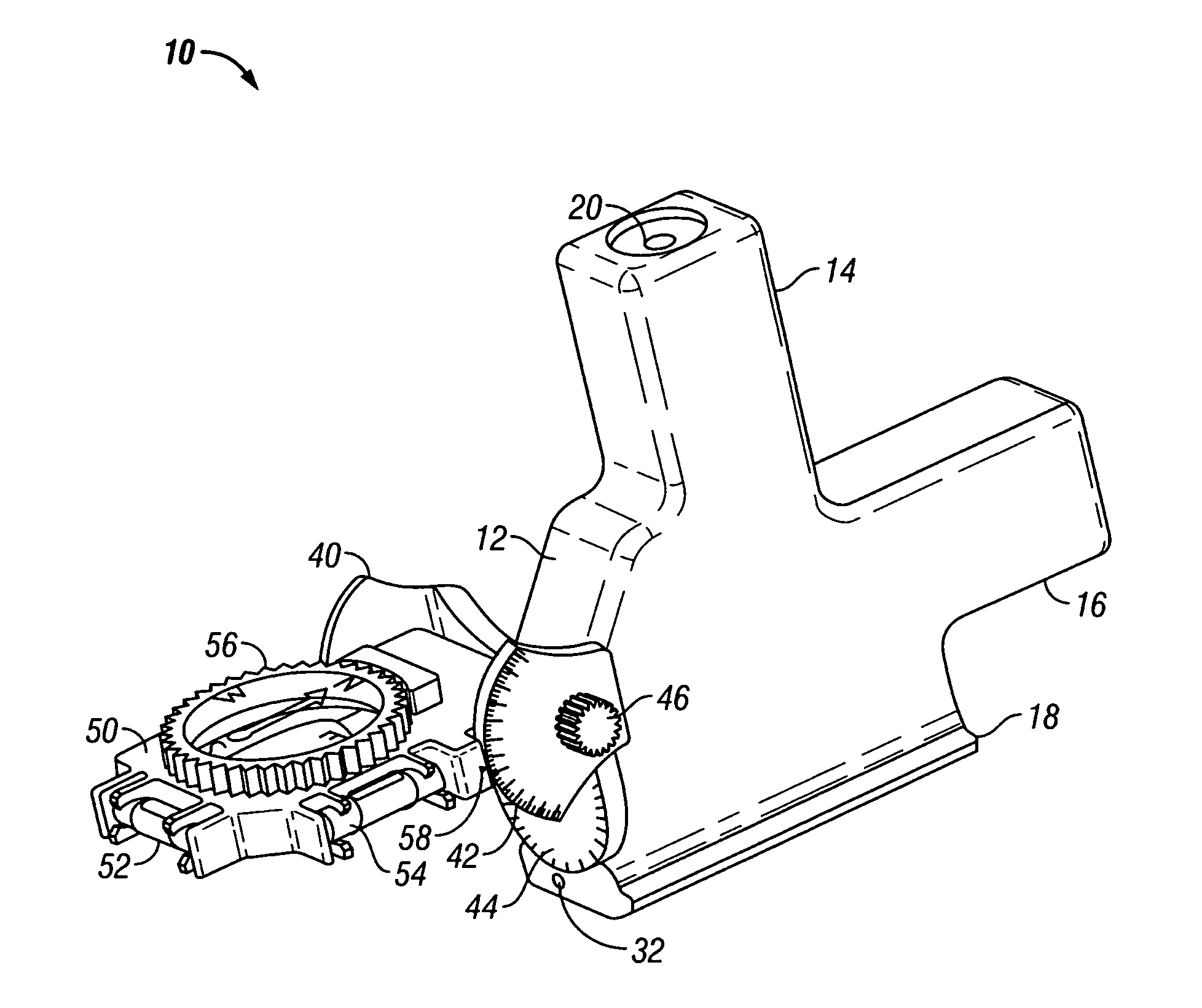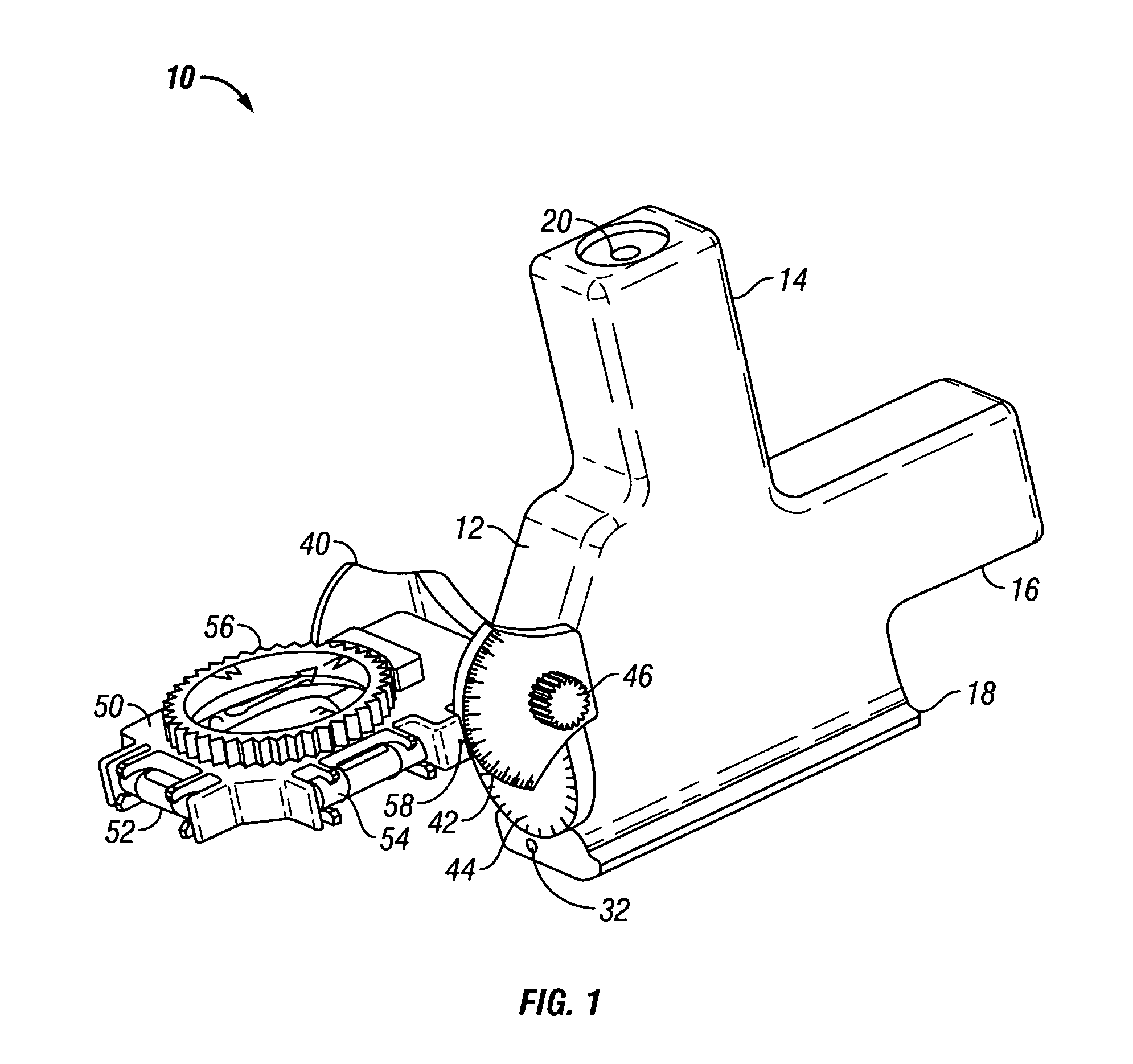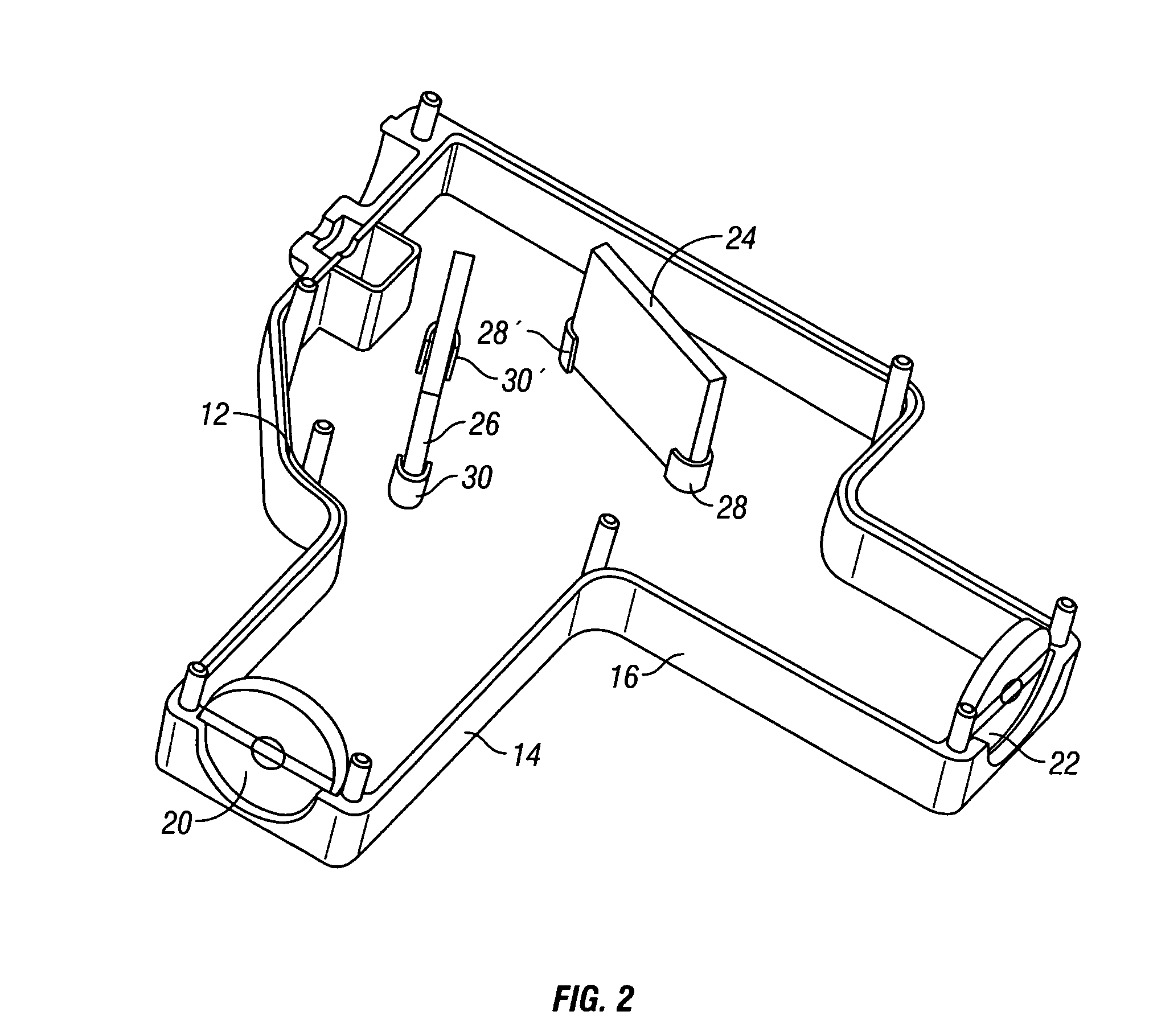Satellite dish sighting apparatus and alignment system
- Summary
- Abstract
- Description
- Claims
- Application Information
AI Technical Summary
Benefits of technology
Problems solved by technology
Method used
Image
Examples
Embodiment Construction
[0037]Reference is now made to the drawings which illustrate a preferred embodiment of the invention. As shown therein, FIG. 1 shows a side view of the preferred embodiment of the present invention. FIG. 1 shows the sighting portion with the compass portion attached to the back of the sighting portion.
[0038]The preferred embodiment of sighting device 10 is made from a hard plastic or other similar material, most preferably non-ferrous and of a material which does not interfere with a compass (i.e. made from materials that do not exhibit ferromagnetism). Thus PVC, ABS and similar plastics, made by machining, injection molding or similar means, may be employed in the invention.
[0039]The sighting device 10 includes a body 12, preferably made by machining or injection molding of plastic materials, which includes a viewing tube made up of viewing arm 14 and line of sight arm 16. In a preferred embodiment, the two arms 14 and 16 are disposed at a ninety degree angle (90°) one to the other...
PUM
 Login to View More
Login to View More Abstract
Description
Claims
Application Information
 Login to View More
Login to View More - R&D
- Intellectual Property
- Life Sciences
- Materials
- Tech Scout
- Unparalleled Data Quality
- Higher Quality Content
- 60% Fewer Hallucinations
Browse by: Latest US Patents, China's latest patents, Technical Efficacy Thesaurus, Application Domain, Technology Topic, Popular Technical Reports.
© 2025 PatSnap. All rights reserved.Legal|Privacy policy|Modern Slavery Act Transparency Statement|Sitemap|About US| Contact US: help@patsnap.com



